September 30th, 2024
14minute read
Elmer Pankratz is nearly 102 years old.
He is one of Americas few remainingNorth American P-51 Mustangpilots from World War II.
More than that, Elmer found himself in demand as a speaker at various aviation and veterans events.
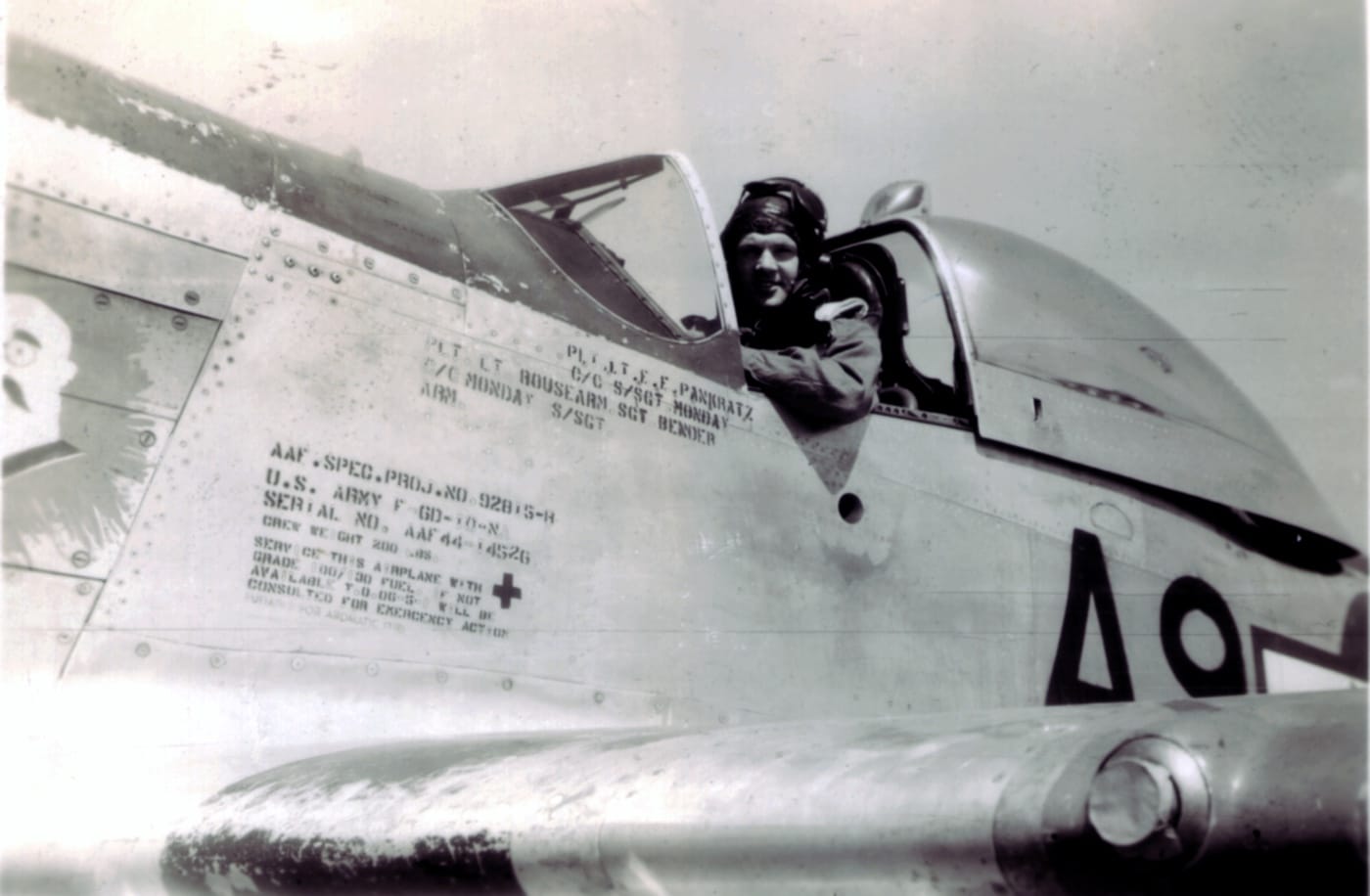
Elmer Pankratz prepares for a flight over Germany in the spring of 1945. Image: Courtesy of Elmer Pankratz
That all changed when a friend from high school showed up with silver wings on his chest.
The cadets would have to rely on their instruments, a very difficult mode of flying.
Then I heard pleading and panic on the radio and one voice said, Im bailing out.
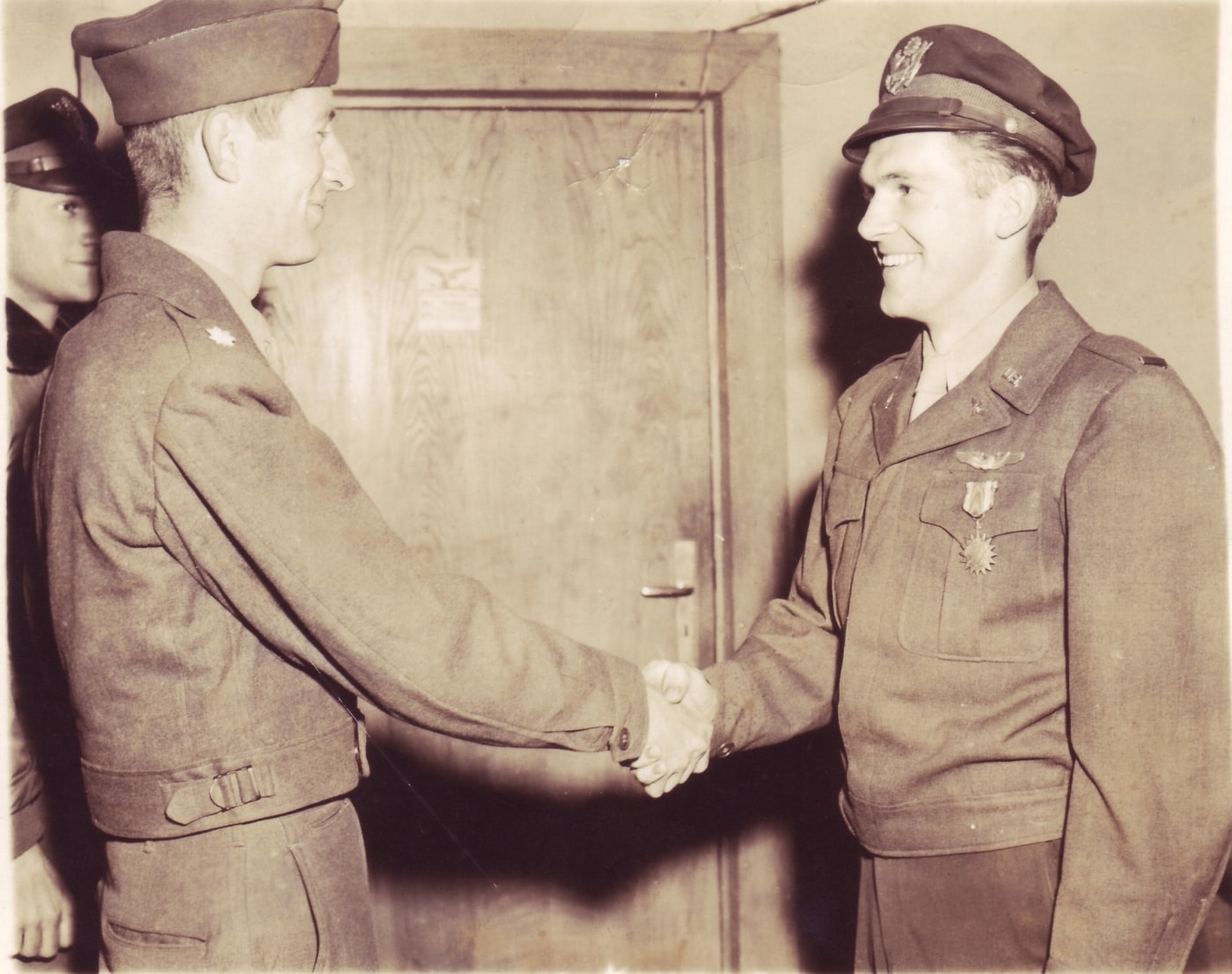
Elmer Pankratz is awarded his first Air Medal. Awarded for heroism and meritorious conduct, Pankratz was awarded seven of the military decorations during World War II. Image: Courtesy of Elmer Pankratz
Elmer did find the airfield and landed safely.
He was one of the lucky ones.
A total of 35 planes went out that night, and 11 of them crashed in the darkness.
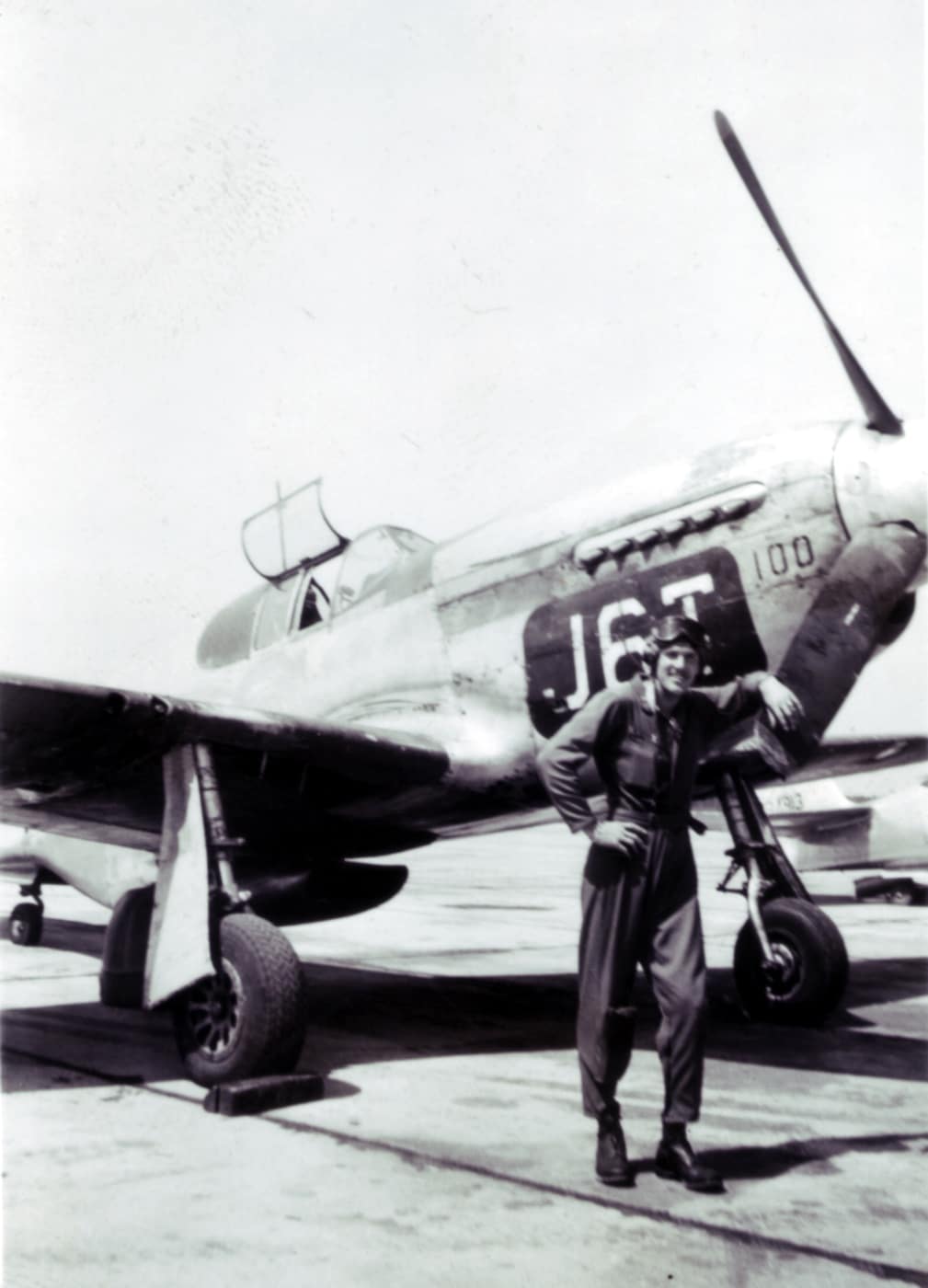
Pankratz is shown here with a North American F-6B Mustang during training in August 1944. The photo was taken at Key Field in Meridian, Mississippi. Image: Courtesy of Elmer Pankratz
He probably relaxed and vertigo got him.
One Cadet stayed in the air until dawns earliest light, and landed on a highway.
There was no time to mourn.
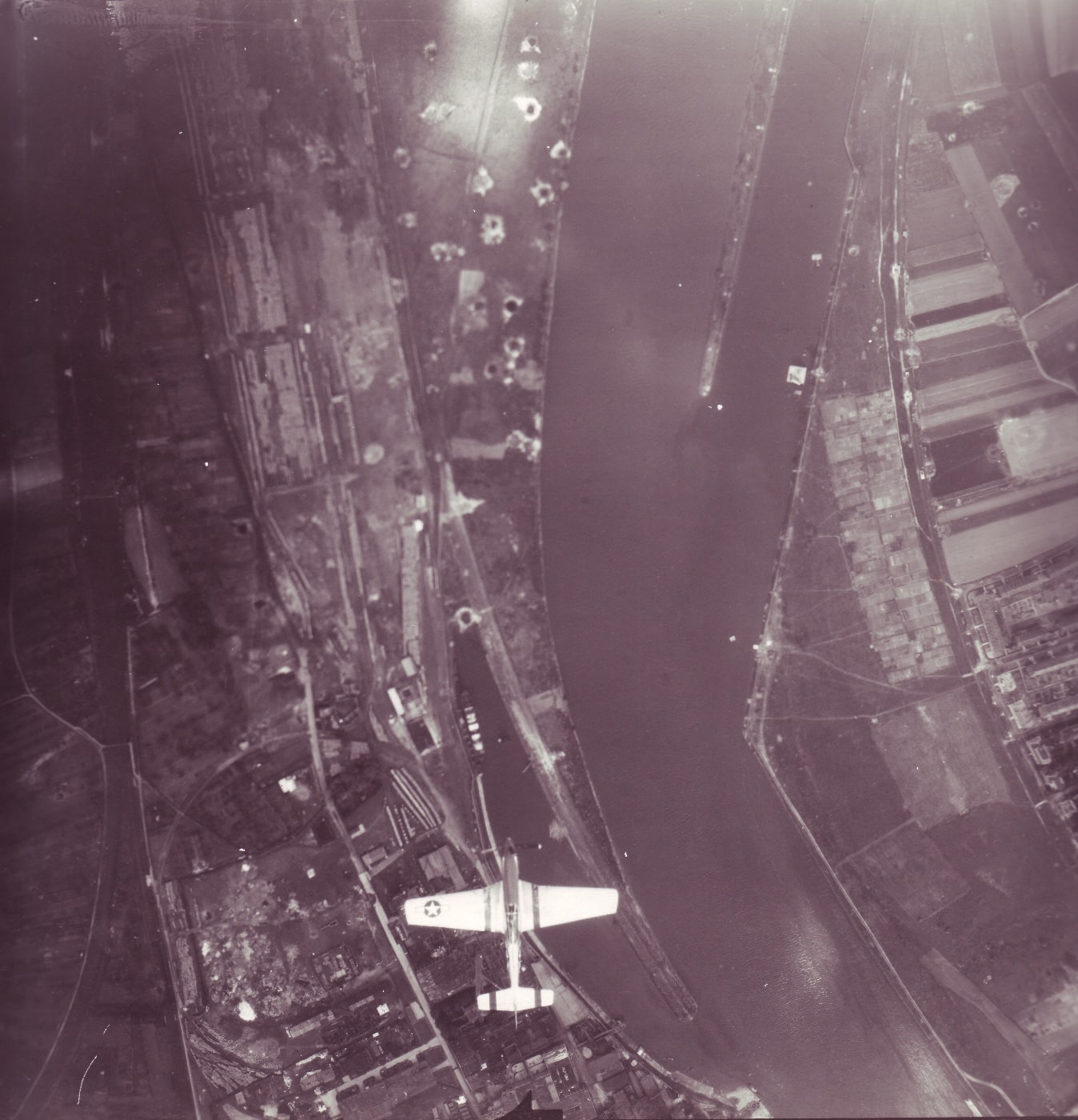
During the spring of 1945, Pankratz took this reconnaissance photo that also captured a squadron buddy over the Rhine River in Germany. Image: Courtesy of Elmer Pankratz
The excitement of going to single-engine Advanced Flying School dulled the shock of my last days at Courtland Field.
This may sound cold and uncaring, but that is not so.
Any other reaction would have finished my flying.
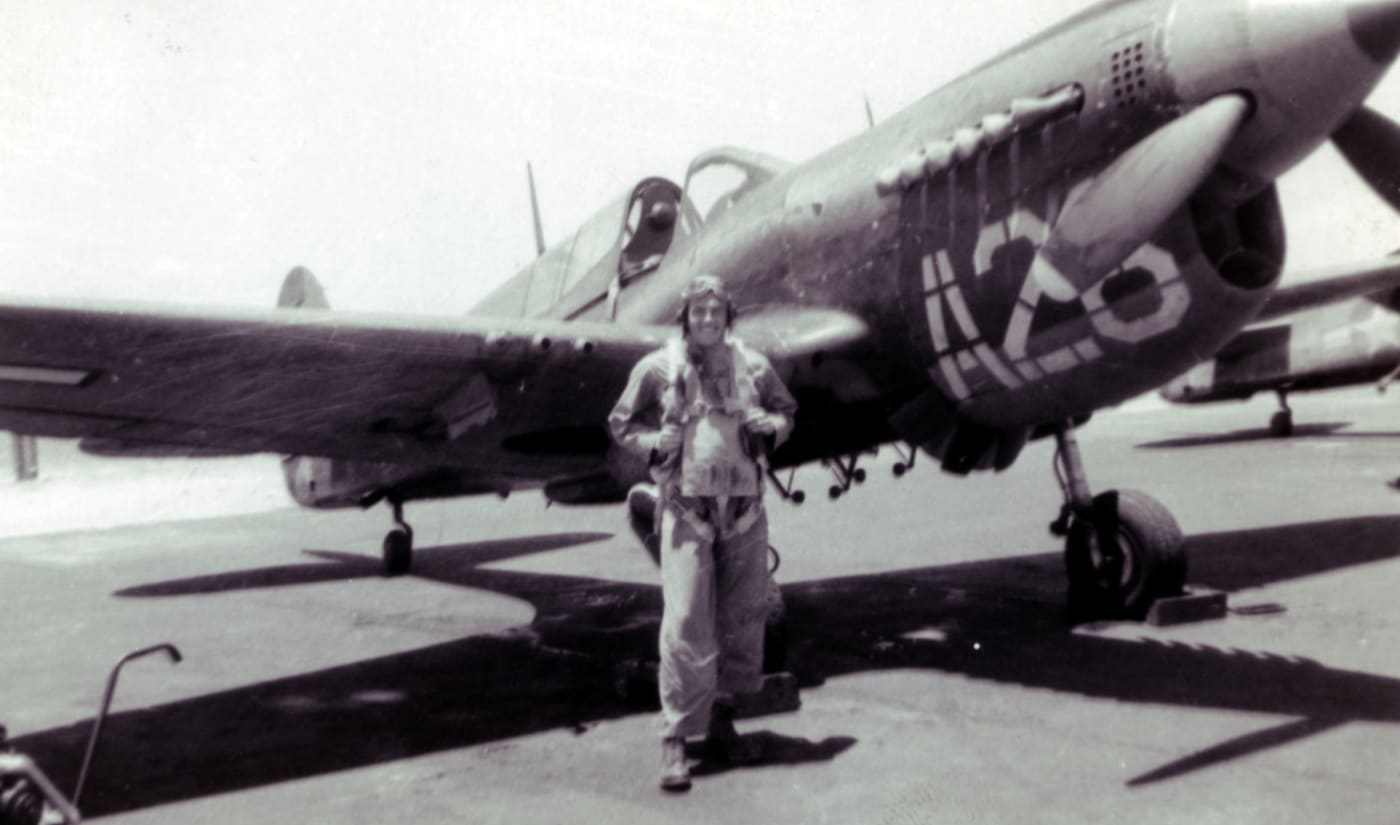
Pankratz, a newly minted fighter pilot, poses with a P-40 Warhawk during training. Image: Courtesy of Elmer Pankratz
Now 80 years later, I still feel a very heavy sadness.
It is not with me constantly, but it never goes away.
A Close Call for Elmer Pankratz
The dangers of training continued.
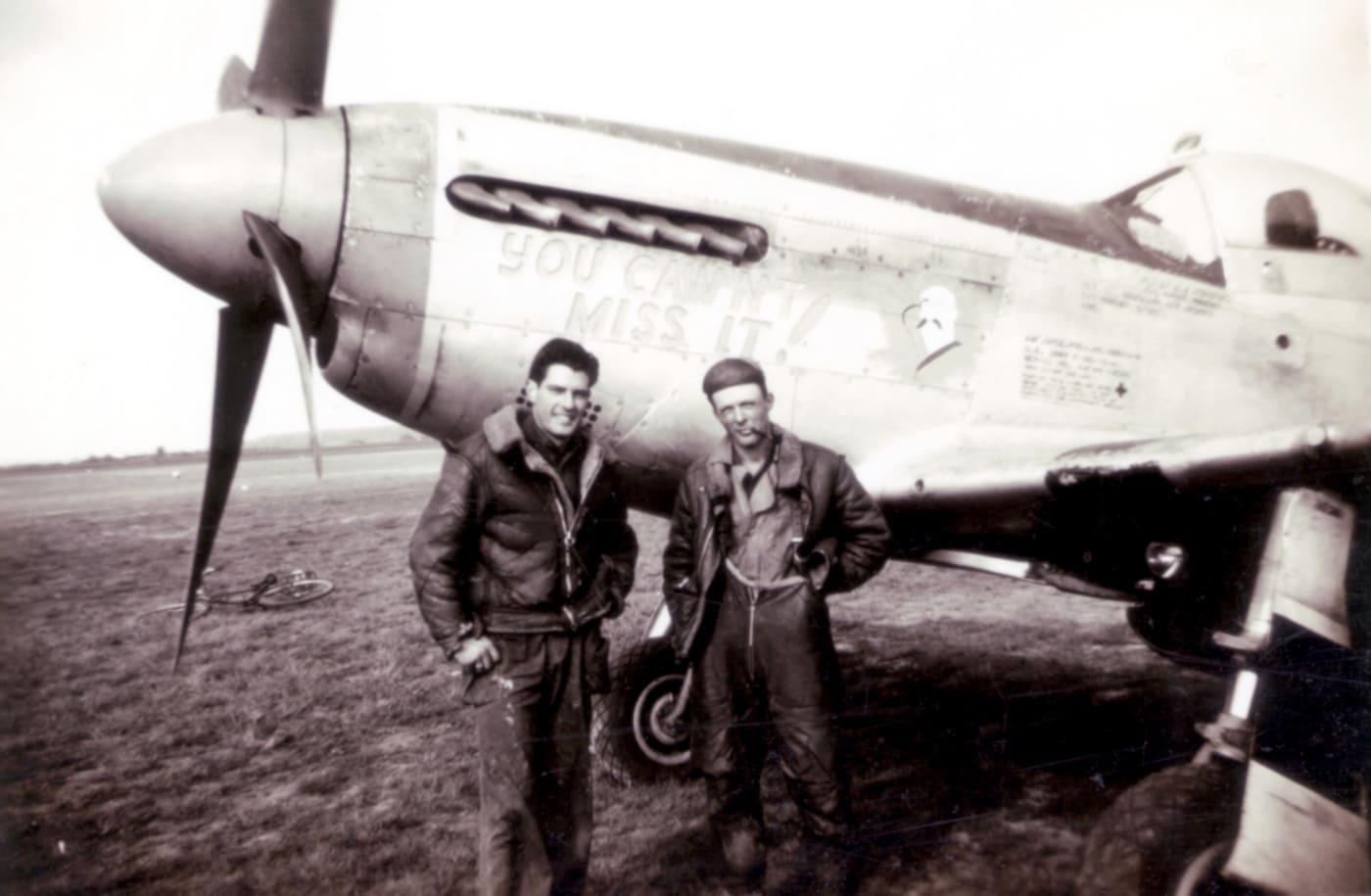
Sgt. Chugon (left) created the nose art for Pankratz’s Mustang that was named “You Cawn’t Miss It!”. Sgt. Monday (right) was Pankratz’s crew chief. Image: Courtesy of Elmer Pankratz
Elmers P-40 was third in line for takeoff.
The answer came back for all the aircraft to shut their engines down.
What would have happened if he tried to take off with the trim set incorrectly?
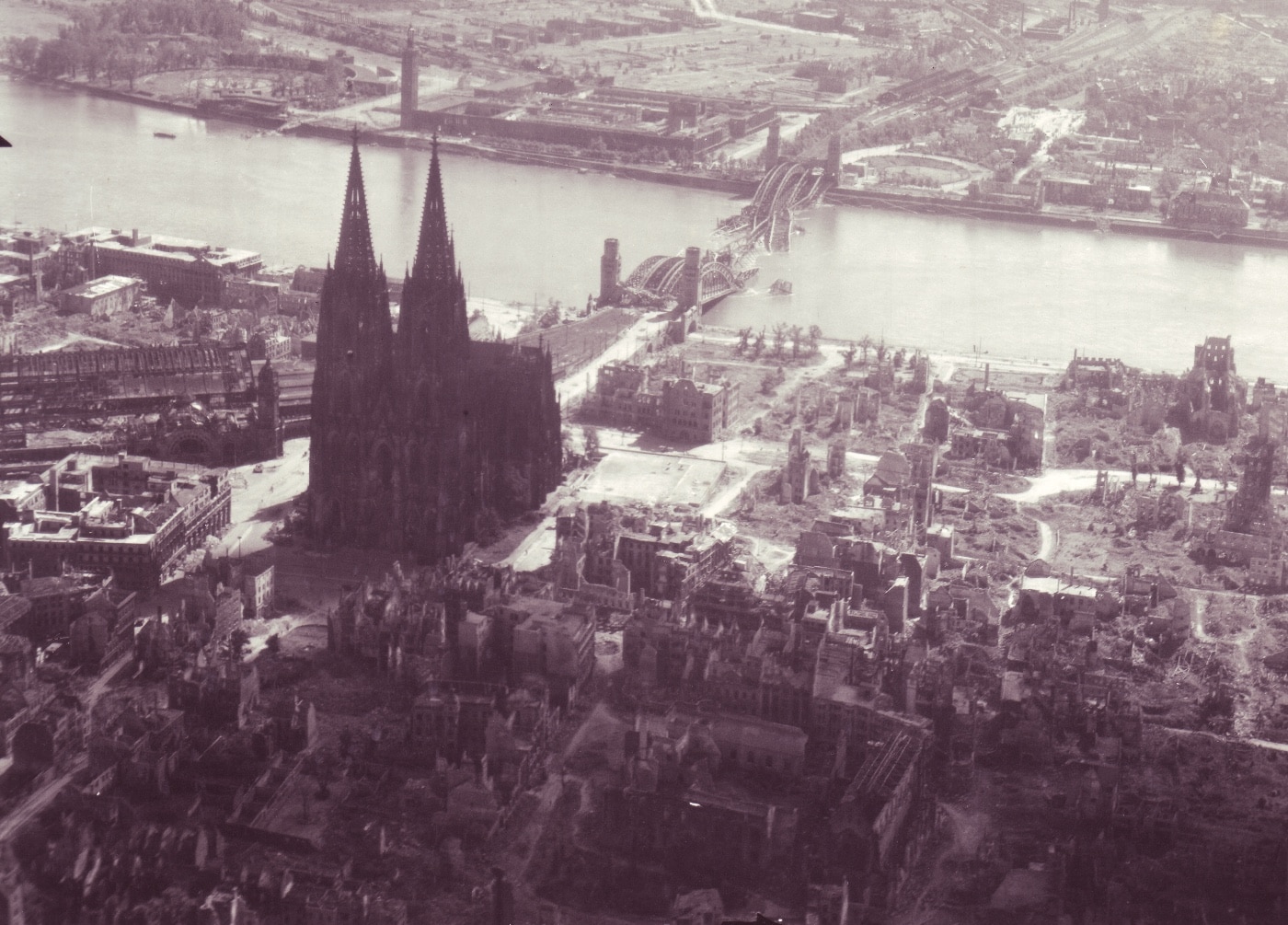
Pankratz took this image of Cologne Cathedral in April 1945. Beyond is the Hohenzollern Bridge over the Rhine. The bridge was destroyed by German troops to slow the Allied advance. Image: Elmer Pankratz
I would have swerved, crashed and died on my first takeoff in a fighter, Elmer said flatly.
Instead, he walked away unscathed.
The next day, he received a 10-day pass.
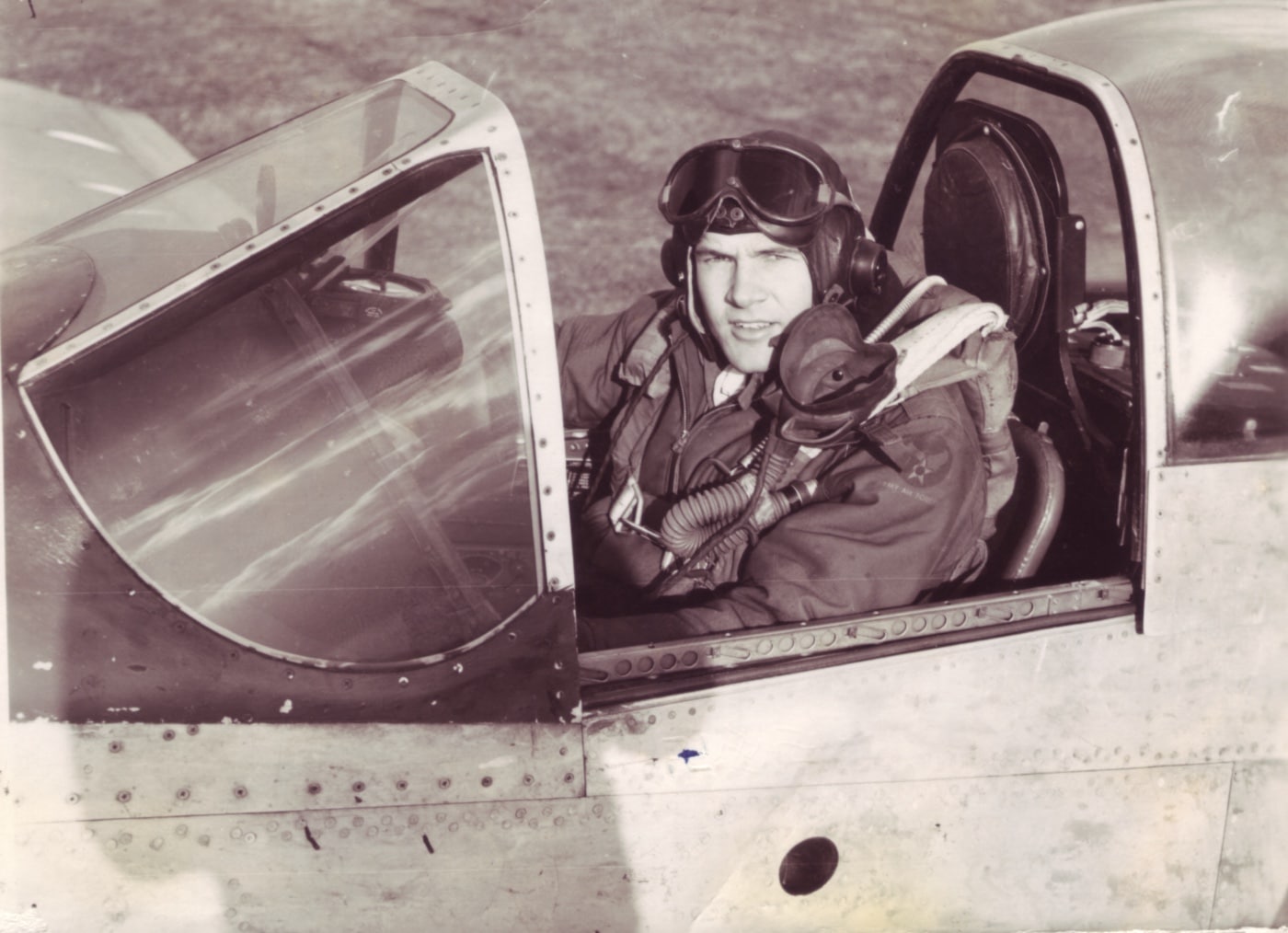
Pankratz in the cockpit of his “Aluminum Sweetheart” F-6 Mustang. Image: Courtesy of Elmer Pankratz
When he returned, he soloed in a P-40 without a hint of nerves.
He had become a fighter pilot.
The big questions were, where am I going, and what will I be flying?
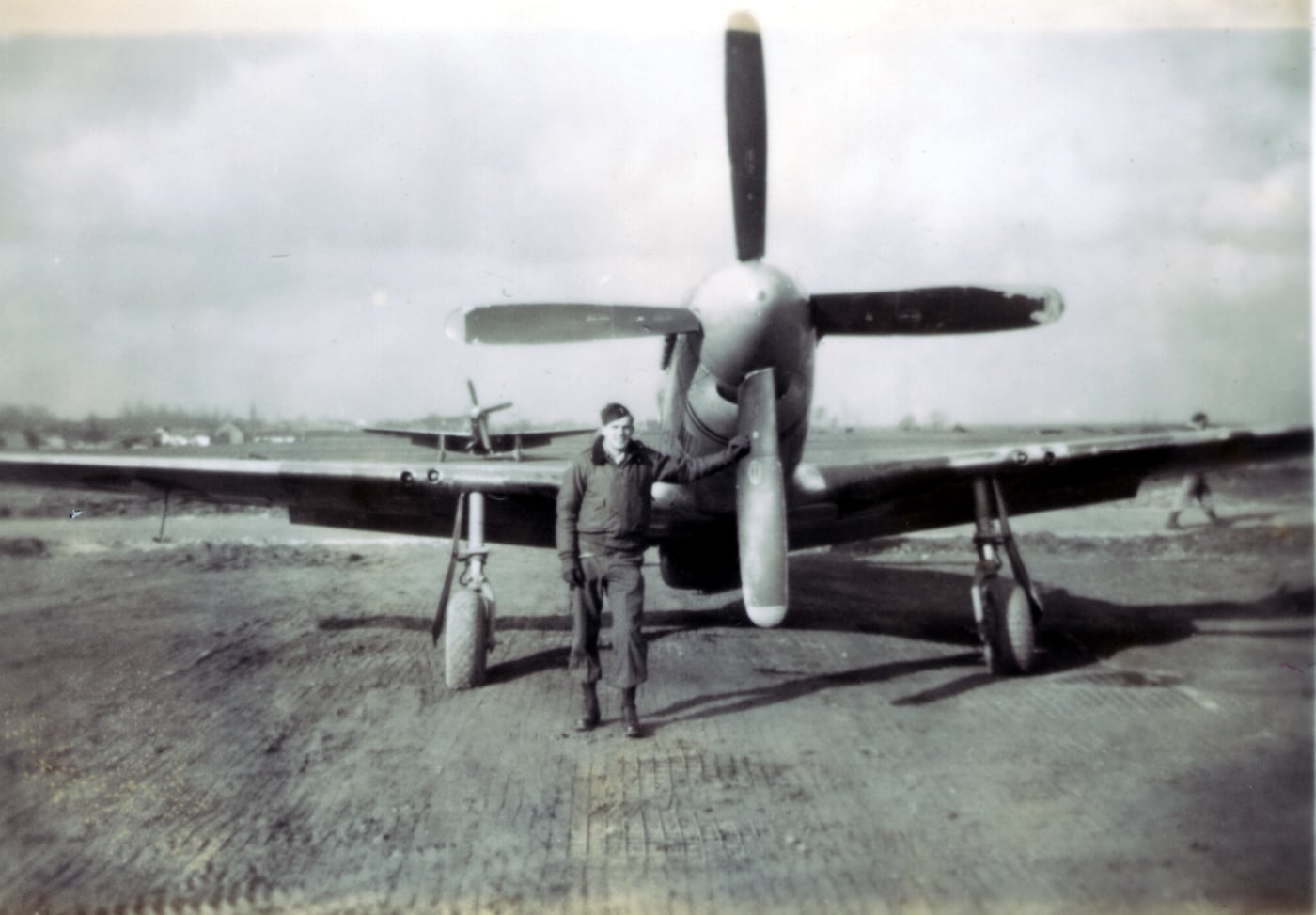
Elmer Pankratz stands with his North American F-6B Mustang on a rough forward airfield in Belgium during World War II. Image: Courtesy of Elmer Pankratz
So, it will probably be the P-47 Thunderbolt or the P-51 Mustang.
My dream airplane was, and always will be the beautiful North American P-51.
A notice on the bulletin board stated that volunteers were needed for Tactical Reconnaissance.
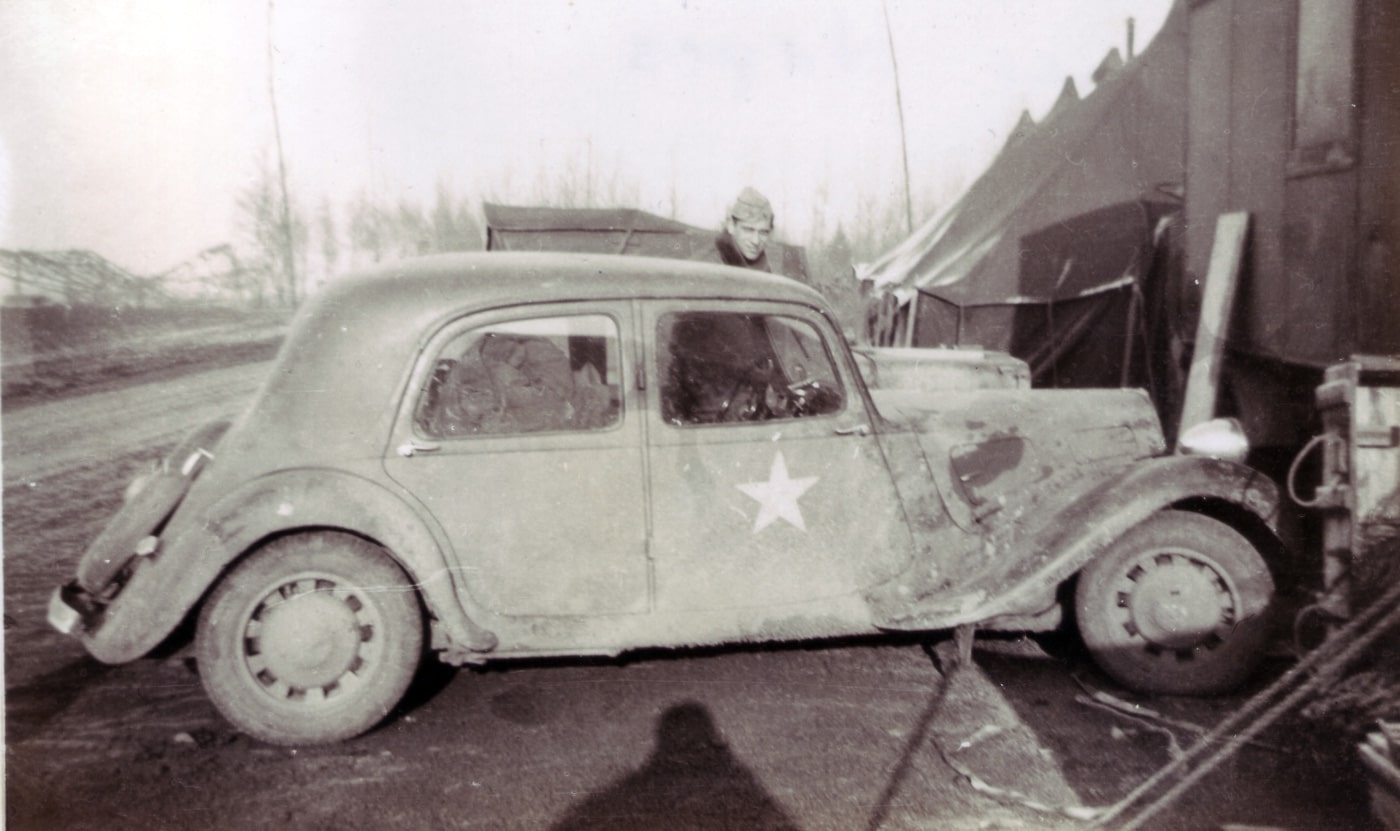
A Peugeot sedan liberated from the German Army provided a more comfortable ride for the pilots from their quarters to the airfield. Image: Courtesy of Elmer Pankratz
So, stay away from it.
It sounded like good advice to Elmer, so he ignored the notice.
That meant 10 more days at home,andI would be flying my dream airplane.
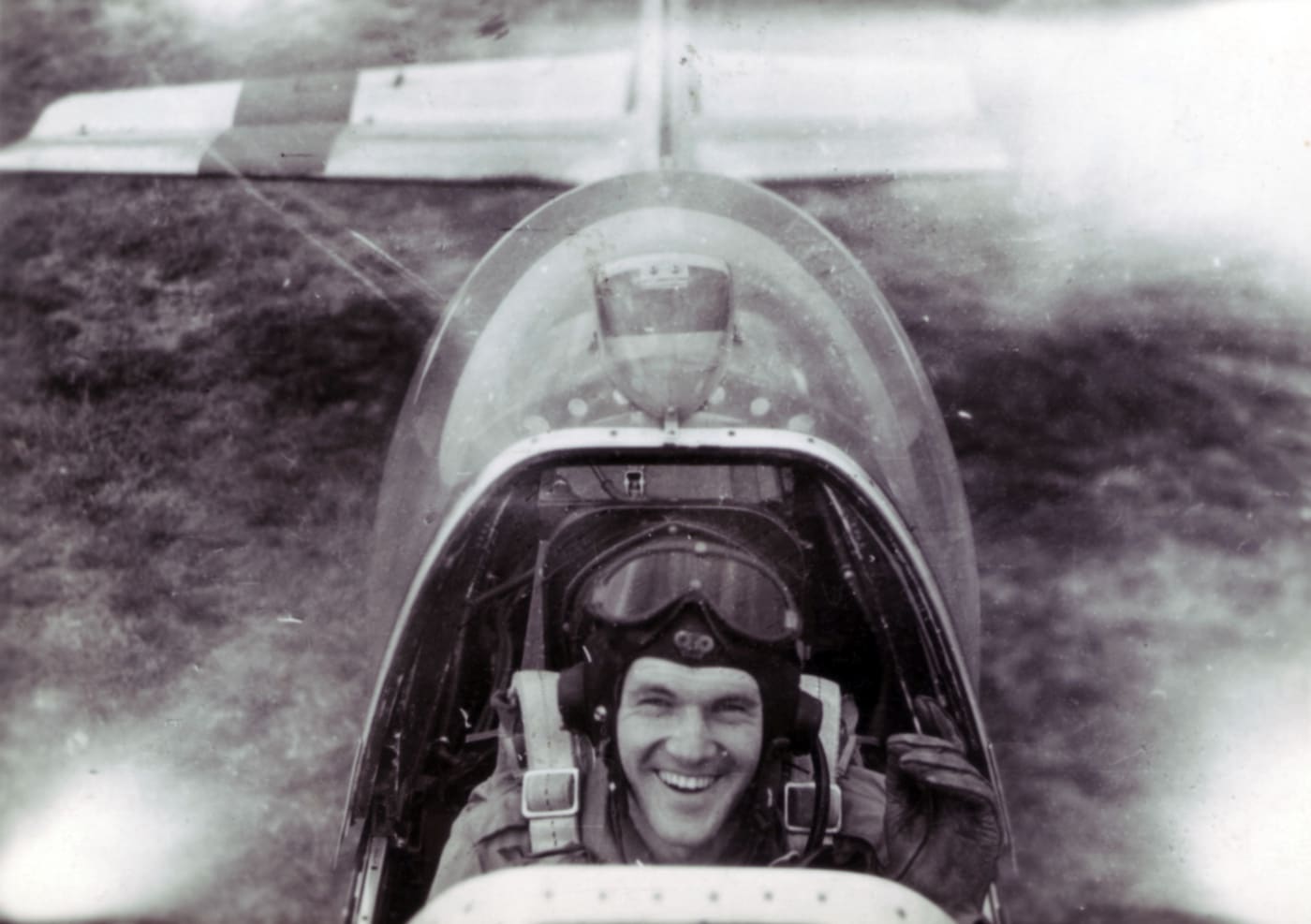
Pankratz in the cockpit of a North American F-6 Mustang. It is the “D” model with a glass buble canopy for better visibility. Image: Courtesy of Elmer Pankratz
So, whats to think about!?!
Sign me up now and I will worry about the dangerous stuff later!, Elmer said.
One of my first missions was to photograph a specific bridge over a river.
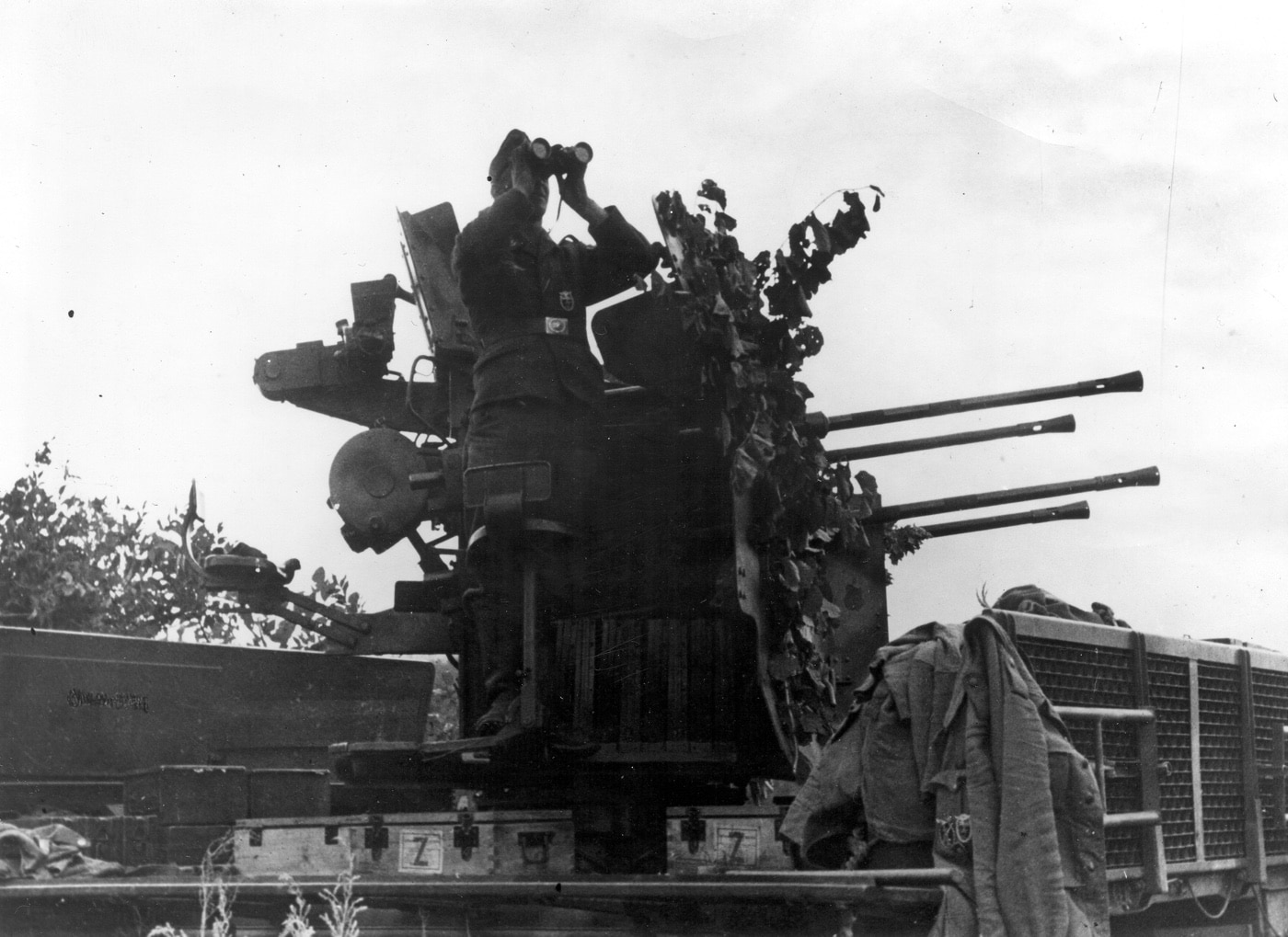
German anti-aircraft guns protected every valuable target. Here, a German soldier mans a Flakvierling 38. The AA gun used a quad 20mm autocannon arrangement. Image: Author’s collection
It gave me a boost of confidence when I found the bridge and got good pictures of it.
I also found out how hot a fighter gets on the deck in the summer in Mississippi.
There was no air conditioning in those babies!
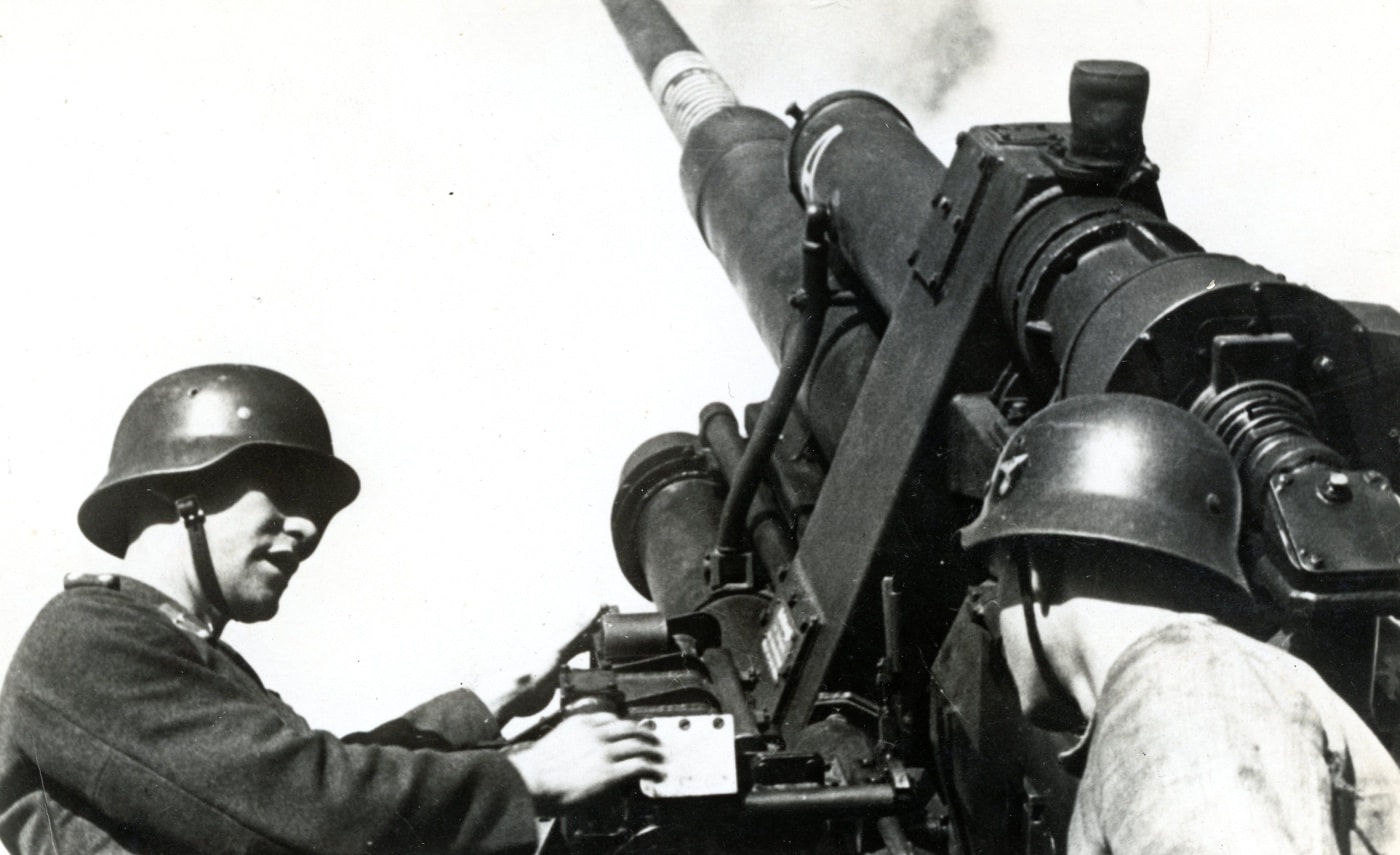
TheGerman 88mm gunscovered targets at medium and high altitude. Pankratz once found himself “boxed” by 88mm fire, but miraculously made it home without a scratch. Image: Author’s collection
Elmers first Mustang flight did not leave him disappointed: The big day came.
The power surge was the most I had experienced, and it really had my full attention.
Even worse, there were reports that P-51s had flipped not a good thing to do.
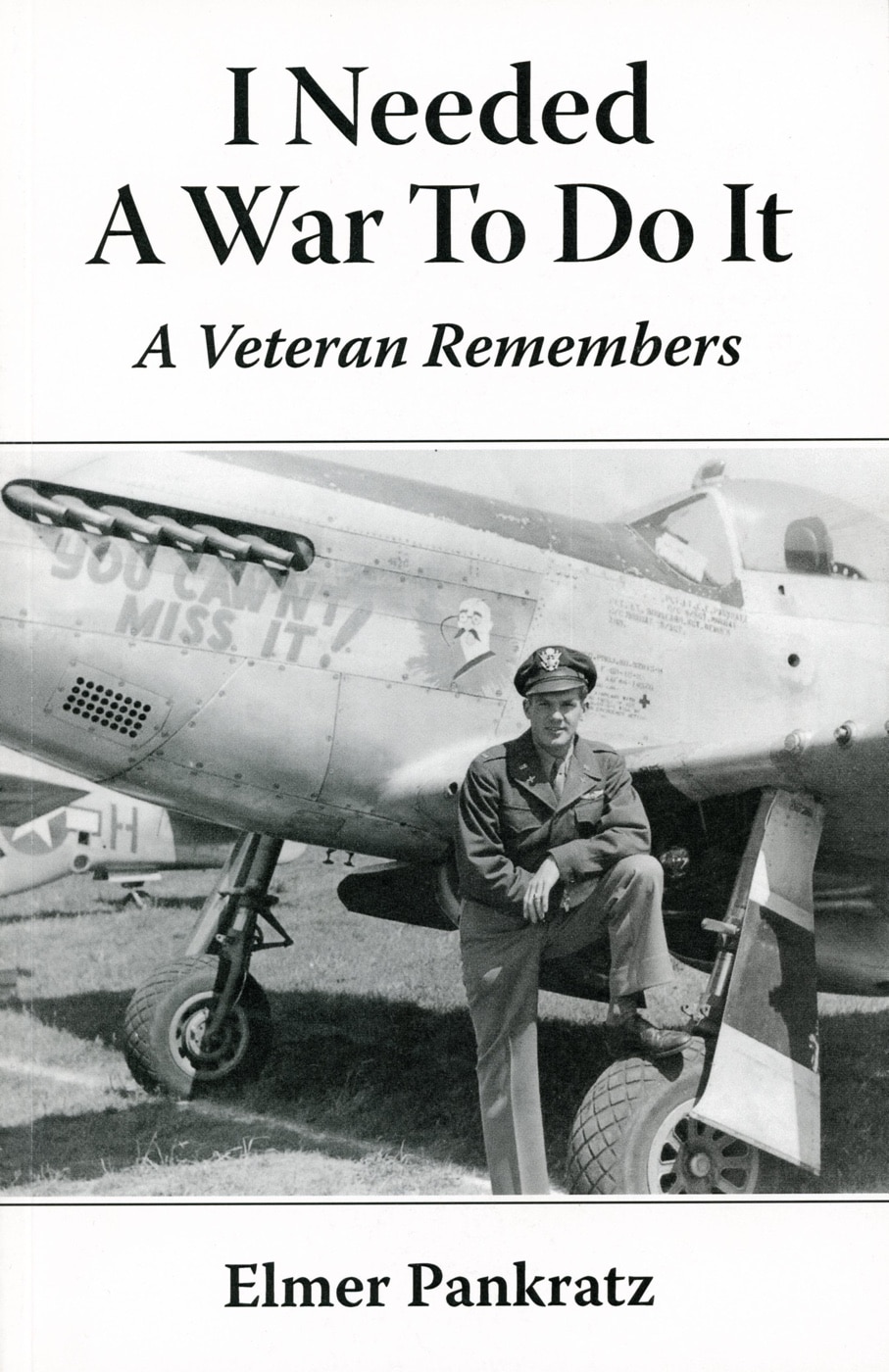
Now out of print, “I Needed a War to Do It” is Elmer Pankratz’s memoir. Image: Author’s collection
There was no horsing this thoroughbred around the sky; just ask her and she would do it.
What a joy to fly!
This meant they were fully armed P-51s with two large cameras mounted inside.
The negative size was 10x 10, and the prints were the same size and were very sharp.
Even so, I was getting itchy to finish training and get into real action.
I was on my way.
I was in the replacement Depot in Paris only long enough to get processed through to Brussels, Belgium.
When we asked where Y-10 was, we were told that the train crew would know.
I have no idea where the train went, but as dawn approached, we were back in Brussels.
We went back to the replacement depot and told our story.
Suddenly, our driver slammed on the brakes, and miraculously none of us were ejected.
That is how I was introduced to the Battle of the Bulge.
His first mission came on January 15, 1945, with a trip to Kaiserlautern.
I was constantly jerking my head around to cover the sky.
By February 1st, the squadron moved back to Y-10 in Belgium.
First came the heavy snow, then came the mud.
Either way, it was always cold.
The F-6D was his dream mount, and Elmer referred to North Americans fabulous fighter as his aluminum sweetheart.
This gave me the visibility of an open cockpit.
There was no air conditioning!
On one mission in February, Elmer acted as a spotter for American long-range artillery.
Near Julich, he called in the corrections on what appeared to be an unimportant speck on the map.
After several adjustments, long-short-left-right, there was a massive explosion.
Another successful mission, but he had no idea what was hit.
Fighting Through the Flak
Tactical recon missions could be uneventful right up until the time they werent.
With the power of the Luftwaffe fighter force on the wane, German flak was the prime enemy.
Elmer was shot at many times, and even boxed in by the fire of an 88mm battery.
Each time he made it back without a scratch to himself or his Mustang.
The twinkling lights of German flak never caught him.
We flew our missions at 6,000 feet.
In those days, I could see a dog running down a road from 6,000 feet.
Today, I couldnt see an elephant from up there.
Ah, to have those young eyes again!
He has plenty of stories from his 43 combat missions.
One stays with him to this day, and it comes up almost every time we meet.
On March 2, 1945, near Munster, Elmer spotted a train.
The Luftwaffe had lost control of the air, and Allied fighter-bombers ranged all over the Reich.
Consequently, German road, rail and barge traffic traveled by night.
Soon enough, the Thunderbolts arrived, and they clobbered the train.
He was okay and ran for the closest woods.
The trouble was that the woods were towards the destroyed train.
If any of the train crew got him, he may not have lived to become a POW.
He wonders about that Thunderbolt pilot to this day another unresolved war story for a pilot trained to observe.
In the meantime, he flew as often as he could.
When the atomic bombs fell on Japan, there was nothing left to do but go home.
Nowadays he enjoys his life, and still lives in his own home.
Do you have any idea how ridiculously expensive that will be?!
?, Elmer asks them.
They respond with: You just focus on making it to 105.
I expect that he will.
He studied, sweated, agonized, and prayed his way through basic training and five flight schools.
He flew in the European Theatre in the Rhineland, the Ardennes, and the Central Europe campaigns.
He was awarded the Air Medal with 6 Oak Leaf clusters, and the Belgian Fourragere.
That is me, and it took a war for me to do it.




